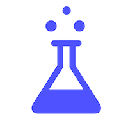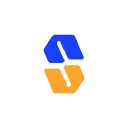-
 Bitcoin
Bitcoin $112400
-1.07% -
 Ethereum
Ethereum $3409
-3.27% -
 XRP
XRP $2.784
-6.60% -
 Tether USDt
Tether USDt $0.9997
-0.03% -
 BNB
BNB $739.3
-2.09% -
 Solana
Solana $158.0
-2.90% -
 USDC
USDC $0.9998
-0.02% -
 TRON
TRON $0.3213
-0.94% -
 Dogecoin
Dogecoin $0.1929
-5.01% -
 Cardano
Cardano $0.6974
-2.82% -
 Hyperliquid
Hyperliquid $36.69
-2.31% -
 Sui
Sui $3.327
-4.80% -
 Stellar
Stellar $0.3672
-5.18% -
 Chainlink
Chainlink $15.65
-3.07% -
 Bitcoin Cash
Bitcoin Cash $525.0
-1.68% -
 Hedera
Hedera $0.2291
-6.00% -
 Avalanche
Avalanche $20.91
-2.96% -
 Ethena USDe
Ethena USDe $1.000
0.00% -
 Toncoin
Toncoin $3.520
-1.12% -
 UNUS SED LEO
UNUS SED LEO $8.968
0.14% -
 Litecoin
Litecoin $105.7
0.26% -
 Shiba Inu
Shiba Inu $0.00001181
-1.79% -
 Polkadot
Polkadot $3.492
-2.08% -
 Uniswap
Uniswap $8.800
-3.10% -
 Dai
Dai $0.9999
-0.01% -
 Monero
Monero $289.9
-3.17% -
 Bitget Token
Bitget Token $4.243
-1.27% -
 Pepe
Pepe $0.00001006
-3.67% -
 Cronos
Cronos $0.1248
-5.68% -
 Aave
Aave $249.7
-2.50%
What is the oracle problem of blockchain? How to ensure data credibility?
Blockchains face the oracle problem, needing reliable external data; solutions include decentralized oracles and smart contracts to ensure data credibility and security.
Apr 27, 2025 at 04:43 pm
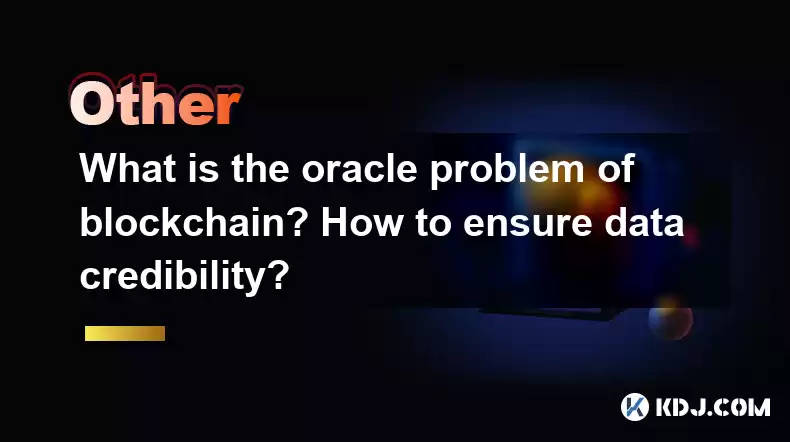
The oracle problem in blockchain technology refers to the challenge of bringing external, real-world data into the blockchain network in a reliable and trustworthy manner. Blockchains are designed to be decentralized and secure, but they operate within their own closed systems, making it difficult to incorporate external data without compromising their integrity. This article will delve into the intricacies of the oracle problem and explore various solutions to ensure data credibility within blockchain networks.
Understanding the Oracle Problem
The core of the oracle problem lies in the fact that blockchains cannot access external data directly. They rely on a consensus mechanism among nodes to validate transactions and maintain the integrity of the ledger. However, when it comes to real-world data, such as stock prices, weather conditions, or sports results, blockchains need a mechanism to fetch and validate this information.
Oracles are third-party services that act as bridges between the blockchain and the outside world. They fetch data from external sources, process it, and then relay it to the blockchain. The challenge here is ensuring that the data provided by the oracle is accurate and trustworthy, as any manipulation could lead to incorrect data being recorded on the blockchain.
Types of Oracles
There are several types of oracles, each designed to serve different purposes and handle various kinds of data. Understanding these types is crucial for addressing the oracle problem effectively.
Software Oracles: These oracles fetch data from online sources such as APIs, websites, and databases. They are commonly used for financial data, weather information, and other publicly available data sets.
Hardware Oracles: These oracles are connected to physical devices and sensors, allowing blockchains to interact with real-world events. They are used in applications like IoT (Internet of Things) and supply chain management.
Human Oracles: These involve human input to verify data. They are often used in scenarios where automated systems cannot provide the necessary validation, such as in legal or medical contexts.
Inbound vs. Outbound Oracles: Inbound oracles bring external data into the blockchain, while outbound oracles transmit data from the blockchain to external systems. Both types are essential for the seamless integration of blockchains with external environments.
Ensuring Data Credibility
To address the oracle problem and ensure data credibility, several strategies and technologies have been developed. These solutions aim to enhance the reliability and security of the data provided by oracles.
Decentralized Oracles: One of the most promising solutions is the use of decentralized oracles. Instead of relying on a single, centralized oracle, these systems use multiple oracles to fetch and validate data. By aggregating data from multiple sources, decentralized oracles can reduce the risk of manipulation and increase the overall reliability of the data.
Consensus Mechanisms: Decentralized oracles often employ consensus mechanisms to validate data. For example, a network of oracles might use a voting system to determine the accuracy of the data they provide. If a majority of oracles agree on a particular data point, it is considered valid and can be recorded on the blockchain.
Cryptographic Techniques: Cryptographic methods, such as zero-knowledge proofs and homomorphic encryption, can be used to verify the integrity of data without revealing its contents. These techniques allow oracles to prove that the data they provide is accurate without compromising privacy.
Smart Contracts: Smart contracts can be programmed to interact with oracles and automatically execute based on the data they receive. By integrating oracles with smart contracts, blockchains can ensure that actions are taken only when certain conditions are met, enhancing the reliability of the system.
Case Studies: Real-World Applications
Several blockchain projects have successfully implemented oracles to solve the oracle problem and ensure data credibility. Examining these case studies can provide valuable insights into how these solutions work in practice.
Chainlink: Chainlink is a decentralized oracle network that connects smart contracts with external data sources. It uses a network of node operators to fetch and validate data, ensuring that the information provided to smart contracts is accurate and reliable. Chainlink's decentralized approach helps mitigate the risks associated with centralized oracles.
Augur: Augur is a decentralized prediction market platform that relies on oracles to determine the outcome of events. It uses a reputation system to incentivize honest reporting and penalize malicious actors, ensuring the accuracy of the data used to settle bets.
Compound: Compound is a decentralized lending platform that uses oracles to determine the value of collateral assets. It integrates with multiple data sources to ensure that the prices used for collateral valuation are accurate and up-to-date, minimizing the risk of liquidation errors.
Challenges and Limitations
Despite the progress made in addressing the oracle problem, several challenges and limitations remain. Understanding these issues is essential for developing more robust solutions.
Security Risks: Oracles introduce new attack vectors, as they can be targeted by malicious actors seeking to manipulate data. Ensuring the security of oracles is crucial for maintaining the integrity of the blockchain.
Data Freshness: The timeliness of data is another challenge. Oracles must fetch and relay data quickly to ensure that the information used by smart contracts is up-to-date. Delays can lead to incorrect actions being taken based on outdated data.
Scalability: As the demand for oracles grows, scalability becomes a concern. Decentralized oracle networks must be able to handle a large volume of data requests without compromising performance.
Cost: Operating oracles, especially decentralized ones, can be expensive. The cost of fetching and validating data must be balanced against the benefits of using oracles in blockchain applications.
Frequently Asked Questions
Q1: How do decentralized oracles differ from centralized oracles?
A1: Decentralized oracles use a network of multiple data sources to fetch and validate information, reducing the risk of data manipulation. Centralized oracles, on the other hand, rely on a single source, which can be a single point of failure and more susceptible to attacks.
Q2: Can oracles be used with any blockchain platform?
A2: Yes, oracles can be integrated with various blockchain platforms. However, the specific implementation may vary depending on the platform's architecture and the type of data being used.
Q3: What role do smart contracts play in the oracle ecosystem?
A3: Smart contracts interact with oracles to receive external data and execute actions based on that data. They help automate processes and ensure that actions are taken only when certain conditions are met, enhancing the reliability of the system.
Q4: Are there any industries that particularly benefit from the use of oracles?
A4: Industries such as finance, insurance, supply chain management, and IoT can greatly benefit from oracles. These sectors often require real-time data from external sources to make informed decisions and automate processes.
Disclaimer:info@kdj.com
The information provided is not trading advice. kdj.com does not assume any responsibility for any investments made based on the information provided in this article. Cryptocurrencies are highly volatile and it is highly recommended that you invest with caution after thorough research!
If you believe that the content used on this website infringes your copyright, please contact us immediately (info@kdj.com) and we will delete it promptly.
- BlockDAG, SEI, Ethena: Top Crypto Performers Under the Microscope
- 2025-08-03 10:50:16
- Bitcoin Blasts Past $119K: How Institutional Adoption and Macro Shifts Fuel the Fire
- 2025-08-03 10:55:16
- Crypto, Grok, and August: Decoding the Latest Trends and Insights
- 2025-08-03 11:10:16
- Crypto, Phishing, and Your Wallet: A New Yorker's Guide to Staying Safe
- 2025-08-03 10:30:16
- Troller Cat Meme Coin Presale Soars: A New King in the Crypto Jungle?
- 2025-08-03 10:30:16
- Grayscale, Altcoin Trust, and Mid-Cap Mania: What's the Deal?
- 2025-08-03 08:50:16
Related knowledge

What is the difference between on-chain and off-chain transactions?
Aug 02,2025 at 04:22pm
Understanding On-Chain TransactionsOn-chain transactions refer to digital asset transfers that are recorded directly on a blockchain ledger. These tra...

What is the double-spending problem and how does blockchain prevent it?
Aug 02,2025 at 01:07pm
Understanding the Double-Spending ProblemThe double-spending problem is a fundamental challenge in digital currency systems where the same digital tok...

What is the difference between a blockchain and a database?
Aug 01,2025 at 09:36pm
Understanding the Core Structure of a BlockchainA blockchain is a decentralized digital ledger that records data in a series of immutable blocks linke...
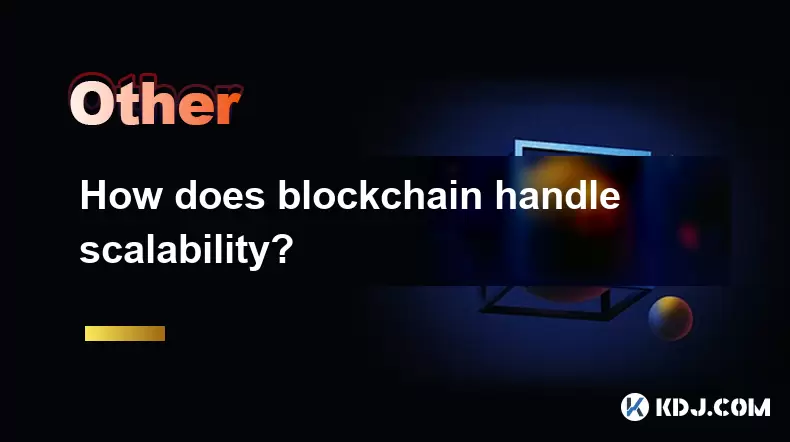
How does blockchain handle scalability?
Aug 02,2025 at 02:58pm
Understanding Blockchain Scalability ChallengesBlockchain scalability refers to a network's ability to handle an increasing volume of transactions wit...
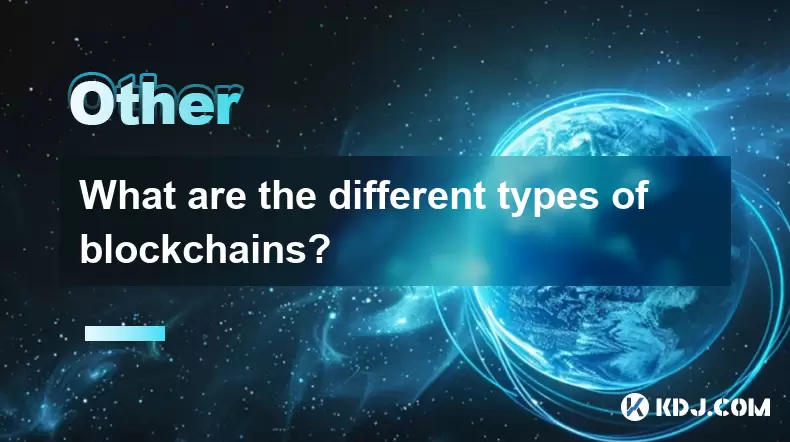
What are the different types of blockchains?
Aug 03,2025 at 03:01am
Public Blockchains: Open and Decentralized NetworksPublic blockchains are the most widely recognized type of blockchain, characterized by their open a...
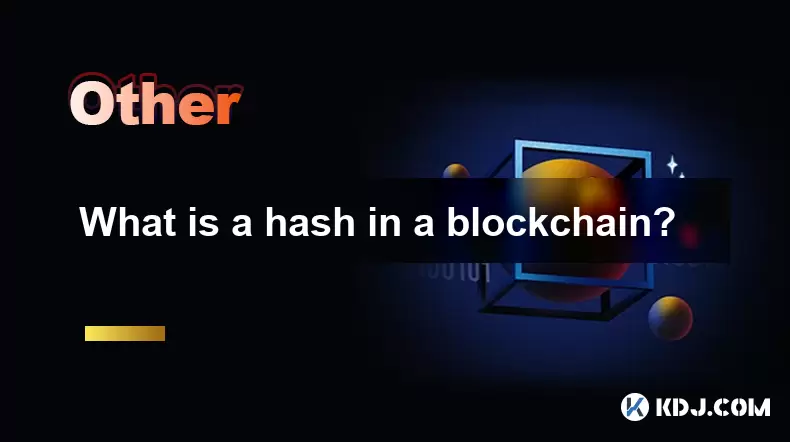
What is a hash in a blockchain?
Aug 02,2025 at 05:28am
Understanding the Concept of Hash in BlockchainA hash in the context of blockchain technology refers to a unique digital fingerprint generated by a cr...

What is the difference between on-chain and off-chain transactions?
Aug 02,2025 at 04:22pm
Understanding On-Chain TransactionsOn-chain transactions refer to digital asset transfers that are recorded directly on a blockchain ledger. These tra...

What is the double-spending problem and how does blockchain prevent it?
Aug 02,2025 at 01:07pm
Understanding the Double-Spending ProblemThe double-spending problem is a fundamental challenge in digital currency systems where the same digital tok...

What is the difference between a blockchain and a database?
Aug 01,2025 at 09:36pm
Understanding the Core Structure of a BlockchainA blockchain is a decentralized digital ledger that records data in a series of immutable blocks linke...

How does blockchain handle scalability?
Aug 02,2025 at 02:58pm
Understanding Blockchain Scalability ChallengesBlockchain scalability refers to a network's ability to handle an increasing volume of transactions wit...

What are the different types of blockchains?
Aug 03,2025 at 03:01am
Public Blockchains: Open and Decentralized NetworksPublic blockchains are the most widely recognized type of blockchain, characterized by their open a...

What is a hash in a blockchain?
Aug 02,2025 at 05:28am
Understanding the Concept of Hash in BlockchainA hash in the context of blockchain technology refers to a unique digital fingerprint generated by a cr...
See all articles




















































































